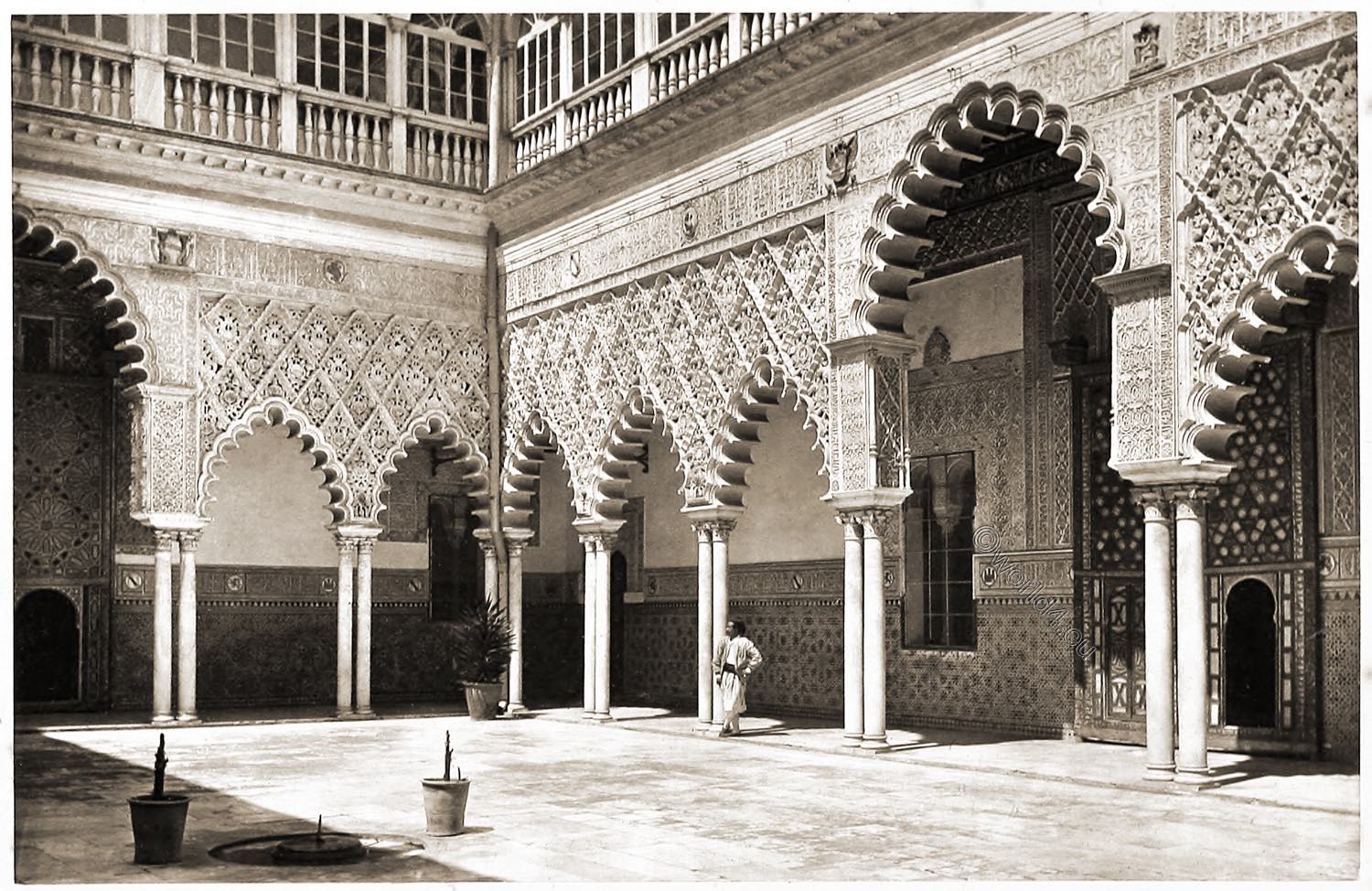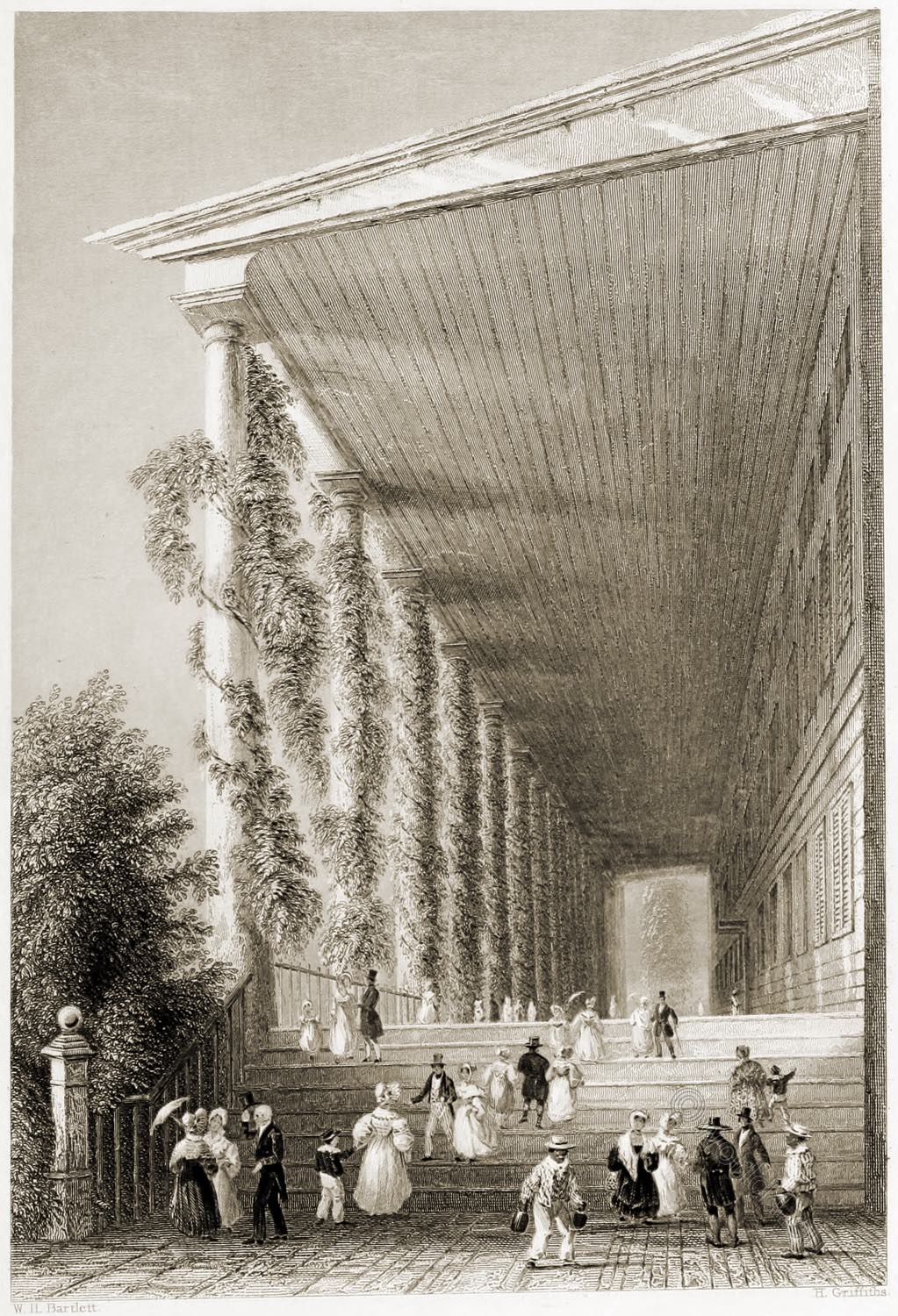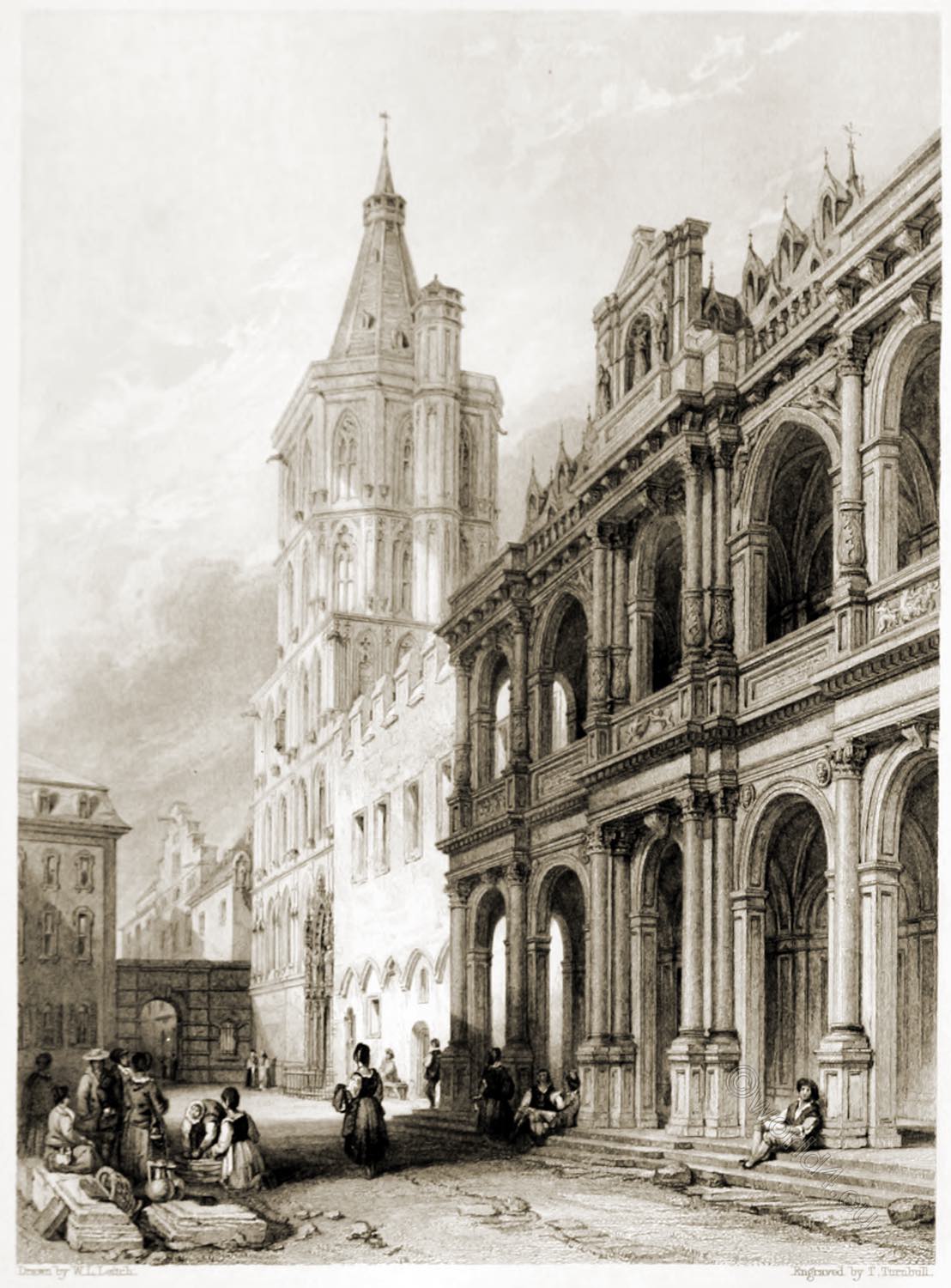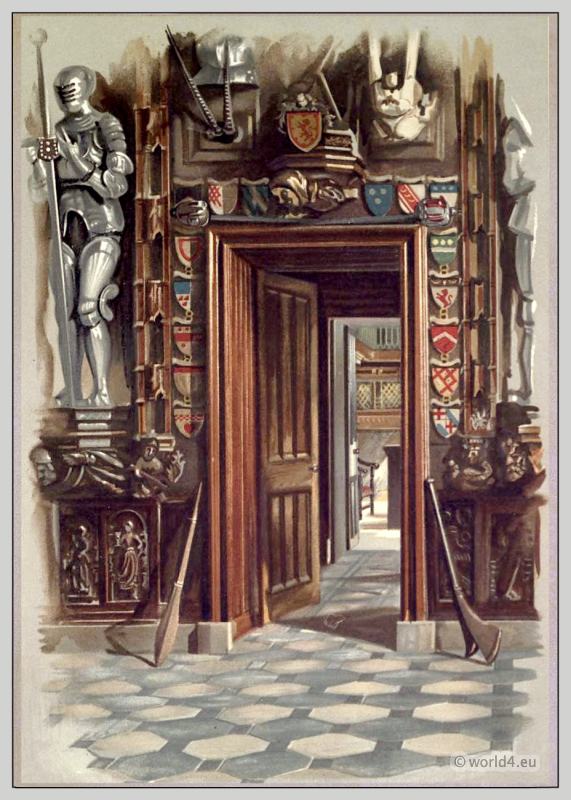
The Alcázar of Seville (Spanish: Reales Alcázares de Sevilla) is the medieval royal palace of Seville. The complex has a long architectural history dating back to Moorish times and is still used today by the Spanish royal family as their official residence when they are in Seville.
COURTYARD OF THE ALCÁZAR, SEVILLE.
"Seville, gay Seville, with its colonnades,
And mosques and convent chimes and castanets,
And flashing eyes of Andalusian maids,
And Gothic towers and Moorish minarets,"
SUNG the poet, summing up in this musical stanza the characteristic attractions and beauties of the city which stay-at-home English folk, if any such now exist, connect with ideas of bullfights and Seville oranges.
Three principal architectural ornaments are the pride of the proud Sevillians, although within their circular walls, partly of Roman, partly of Moorish architecture, pierced with fifteen gates and strengthened by many towers, are so many objects of interest and historical association, that few who have visited the city have succeeded in making a complete investigation of its wealth of treasure. These three are the Cathedral, a strange mixture of Arabian, Gothic and Graeco-Roman architecture; the Giralda, a Moorish tower of exquisite beauty, which serves as a belfry to the cathedral; and the Alcázar, a deserted palace. The latter was probably built before the Alhambra of Granada by the Moorish kings of Andalusia, but on the expulsion of the Africans from thence by Pedro the Cruel, who was passionately fond of Saracen architecture, he so rebuilt and restored it in the original style that it is considered to be practically his work, and thus strangely enough, the Moorish work of a Gothic king.
Pedro used it as his royal palace until, in 1369, notwithstanding the in requited attempts of our own Black Prince to save him from the richly merited reward of a life of almost unexampled villainy and crime, he lost both his dishonored throne and his misspent life.
We cannot doubt that these vaulted cloisters, these marble balconies, once rang with the cries of his victims, whom neither natural relationship, gratitude, nor pity could restrain from the most unheard-of atrocities.
The Alcázar consists of a large hall, forty-five feet square and about one hundred and thirty feet in height, called the Sala de los Embajadores, or Hall of the Ambassadors, which the accompanying photograph places vividly before us; in its beauty of tracery and design, rivaling, if not surpassing, the arabesques of the Alhambra.
The pavement is of marble, the ceiling is painted blue and gold, and the panelling of the wainscots is formed of painted tiles. It is impossible to describe it with any success, for the exquisite details are innumerable, and the spectator is dazzled by all that meets his eyes in whatever direction he may turn them. One can only ask the reader to imagine the arabesques, so exquisitely delineated in the photograph, to be colored with the azures and scarlets, the emeralds and gilding from the wings of tropic humming birds, that he may have some faint idea of the sensations produced by the sight of the marvelous work.
The gardens around the palace are very beautiful, and adorned with numerous and hidden fountains, of which the traveller must be aware if he would not wish to experience their cooling influences. The Alcázar presents a delightful contrast to the cathedral, which cannot fail to strike the spectator: there all is gloom, mystery, solemn magnificence, and massive grandeur; here all is lightness, graceful elegance, and sparkling colour. It is difficult to imagine that that is the great Christian Church, this the scene of deeds of treachery and malice.
No one can gaze into the photograph before us without being transported into a new world of thought and feeling. The Moors of Africa were no barbarians, to be repulsed with force and kept under with fraud, but men of talent, originality, and cultivation far beyond their conquerors, and to them we owe, as the names imply by their Arabic derivation, the arts of algebra and alchemy, since merged into chemistry-and to them we trace the numerals used in our counting-houses and in our schools and in every department of life; and thus in the charming arrangement of multiplied detail, beautiful in its regularity, boundless in its profusion, the national mind of those lofty-browed Saracens opens before us. Yes, clear indeed were the heads of those swarthy infidels, sharp their swords, bright their eyes flashing on Christian gold and Christian maidens; but the picture before us tells the tale of their conquest and expulsion, and should recall the memories of warfare, which, like that of the Israelites with the inhabitants of the land, has made Spain in great measure what it has been, and may be even now influencing the fortunes of that still unhappy country.
Descriptive Article by Francis C. Naish. Photographed by Stuart.
Source: Treasure spots of the world: a selection of the chief beauties and wonders of nature and art by Walter Bentley Woodbury (1834-1885); Francis Clement Naish. London: Ward, Lock, and Tyler, Paternoster Row, 1875.
Continuing
Discover more from World4 Costume Culture History
Subscribe to get the latest posts sent to your email.



